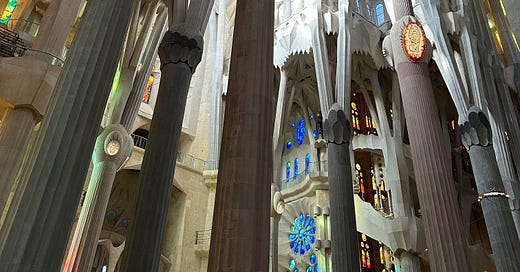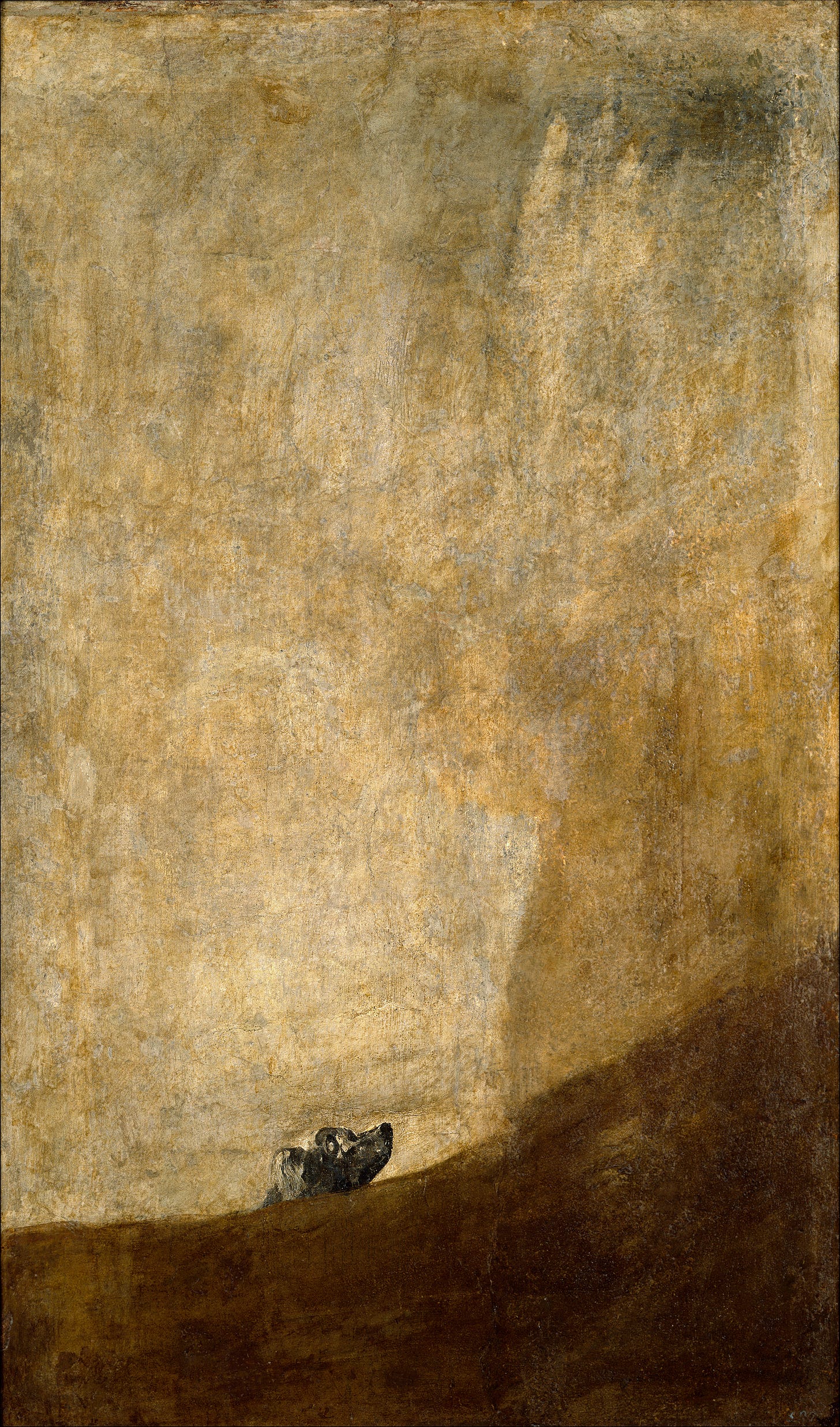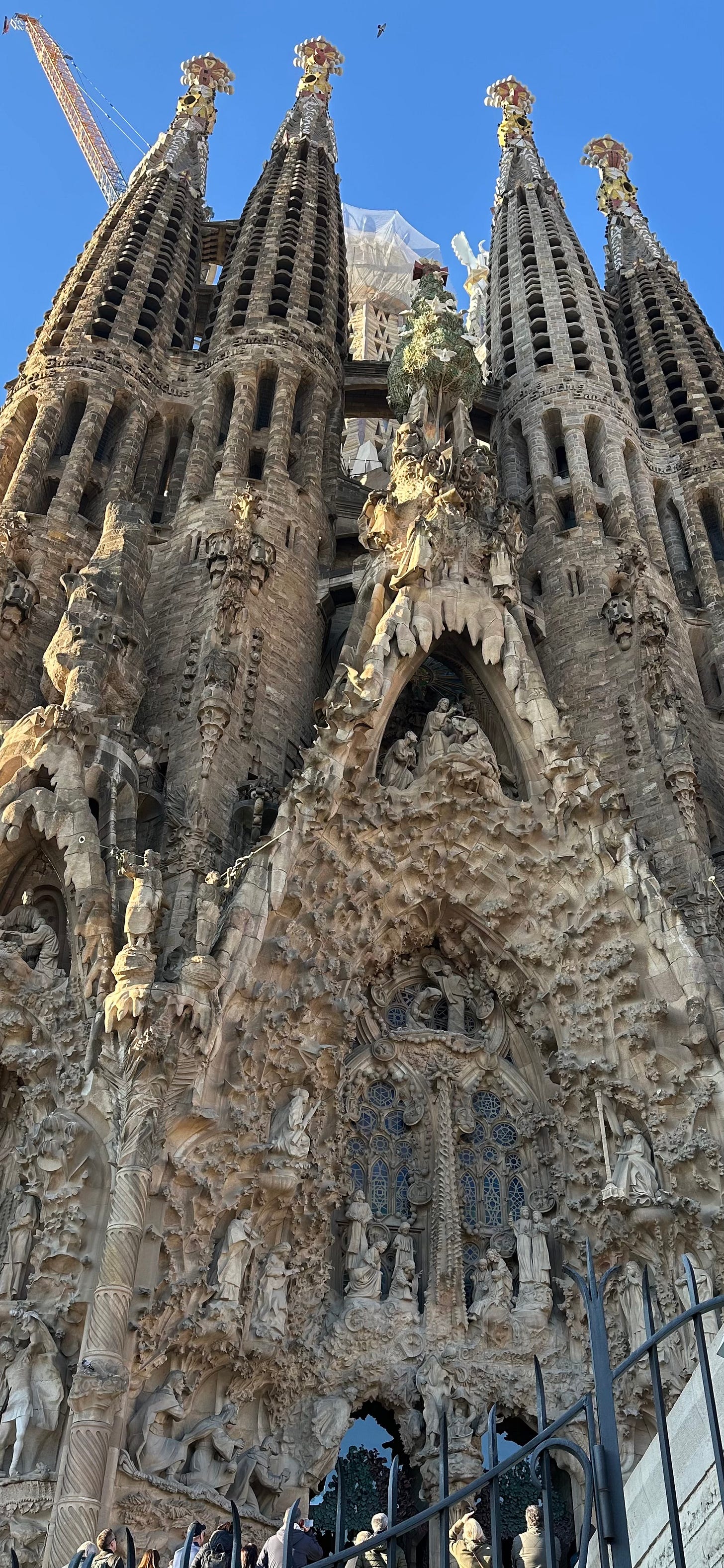Amy and I took the kids to Spain for a week just after Christmas.
It turned out to be just what we needed, even if we didn’t know it when we planned the trip. The distance from home gave us some needed perspective; the concentrated time together helped us get back in tune amid the rush of our kids’ teenage lives, especially as our oldest heads off to college next year; and just seeing another country and culture, taking in its customs (and food!) was really wonderful. We are lucky.
Two things really stayed with me from that trip.
The first is from our time in the Prado museum in Madrid.
It’s just one of the most amazing places on the planet. The concentration of talent, the articulation of history and myth, the expression of emotion and feeling, the mastery of form, the timeline of innovation and discovery… We were blown away by Velázquez, Rubens and Bosch, and so many more than I can name or even remember now. But this is what stuck out — towards the end of our tour, we walked downstairs to room 67 of the Prado’s Villanueva building to see Francisco Goya’s “Black Paintings.”
I knew Goya primarily from his paintings of Spanish royalty as well as those describing the horrors of war (Third of May 1808, for example). He’s the bedrock of 19th century art history, or at least my understanding of it. He’s the guy who figured out how to connect the past masters to the modern era.
But in room 67 we found another side of Goya in a series of paintings that describe the human condition in the most bleak and despairing terms. Dark stuff. There is a painting of Saturn eating his children; another of two men clubbing each other to death in an open field. And a haunting scene of a dog drowning at sea, holding his head above the waterline at the base of a wave that is sure to send him to his death.
He painted these directly on to the walls of his home towards the end of his life. No one commissioned them and they were not for public consumption. This was his own assessment of humanity after a lifetime of witnessing its highest and lowest.
As we were leaving my youngest said to me, “that was really disturbing.”
It felt like Goya was telling us: “we’re doomed.” That, despite our aspirations and ambitions, all of our science and progress, we are ultimately defined by our depravity and cruelty towards one another. Abandon all hope ye who enter room 67.
I couldn’t escape the thought that Goya’s judgement of the human condition in the 1820s might be even more appropriate in the 2020s. The brutality we’ve witnessed throughout so much of the world in just the last couple of years; the coming purge of talent and competence in the U.S. government by the band of corrupt and craven men who’ve assumed the heights of political power; the destruction of the rule of law and our hard-won democracy; and the suffering that millions of our fellow Americans are about to endure at the hands of the Trump administration… never mind the unmet existential threats at our door, nuclear, climate, AI and pandemic… can today’s Goya find a blacker shade of black?
Despite our soaring rhetoric back home… the land of the free, the home of the brave, a country where all of us are born equal and treated so under the law… maybe we just can’t help ourselves, maybe our true nature has firmly and finally been revealed as selfish, callous and small, willingly led by those who pursue their own reward rather than contribute to the great project of America.
But then…
We went to Barcelona and visited Sagrada Familia.
Designed by Antoni Gaudí and begun in 1882, this basilica that rises on the outside of the old city gave me a completely different perspective of the human condition.
The scale and intensity of this project is mind blowing. Awe inspiring. Dumbfounding. You crane your head up to the sky to see the top of the sandcastle spires and as your eyes drift down they find a thousand scenes carved into the facade of the church, an overwhelming story of man’s existence and relationship with his fellow man and with the divine.
Inside, you are struck by the light pouring through the stained glass windows to the East, tinted green and blue, the colors of growth and life. And then you look to the West to see the windows that will be lit by the setting sun, reds and oranges, the colors of the passion, of death. The light these western windows transmit is the light of the the end of the day, the end of life. Perhaps the end of man.
Except for this one incongruous window that looks like those on the eastern side of the church — full of greens and blues — renewal, new life, resurrection in the face of death and defeat. Hope.
The columns holding up this vast structure resemble trees that branch out and up to a ceiling that looks like a forest canopy, lit by the sunshine coming in through those extraordinary windows.
It’s staggeringly beautiful. But the church is also full of pain, suffering and death. Carved on the outside of that Passion wall is Christ nailed to the cross while Roman soldiers gamble for his clothes. On the front of the church is a scene of a soldier slaughtering innocent children. In fact, the church is the aggregate of all of this pain and beauty, the organic and man-made, the natural world and the artificial one that we create.
What Gaudí seems to be telling us is that, despite the brutality and cruelty of which we are so capable, we are defined ultimately by our ability to overcome those traits and to find something bigger than our pain, our desire and our cruelty, bigger even than the beauty and power and wealth that any one of us might hold.
He looked at humanity and found hope, redemption and even salvation.
It struck me that Gaudí embarked upon this monumental effort knowing full well that he’d never see its completion. In fact, when he died in 1926, only a quarter of it was finished. So strong was his faith in his fellow man that he knew the work would continue long after he was gone. And today, 143 years later, it still is. Sculptors, masons, craftsmen continue to add to the basilica with the hope of completing it before the end of the decade.
The time we had together in Spain, these experiences with Goya and Gaudí, made me think about the choice I have in how I approach the world at this moment. There are reasons to feel hopeless and strong temptations to despair. I don’t judge or blame anyone who gives into them, even if only temporarily.
But Gaudí has something better for us, a lesson on how we might find the will to move forward at this uncertain time, if we are open to it. In Sagrada Familia he shows us the power of having faith in ourselves and in one another, faith in the future and the generations to come. And he offers us this literally concrete example of what this faith can produce.









thank you for reading this, and for these comments. they're great. art is more important than ever. helps me make sense of the world in a way that the news can't. it's the long view. infinity on trial. sagrada familia survived the spanish civil war (though apparently anarchists tried to blow it up!), fascism, global recessions, depressions, pandemics... just getting my head around that and thinking about what we're all part of... our country as a cathedral, the blueprints drawn up by those who preceded us, different hands from different generations putting the stones in place, this crazy massive beautiful cathedral that we'll leave to our kids who will continue the work long after we're gone. Are we going to let Musk's anarchists blow it up? are we going to let the fascists destroy it?
It is true that in some ways, Goya stripped the world bare, peeled back the skin of civility to expose the raw, flinching muscle of despair, his blacks and browns swallowing light, his figures trapped in the final moments before obliteration. Gaudí, by contrast, lifted the human spirit skyward, his mosaics refracting hope like stained glass catching morning sun. But what do we do when the world swings back toward Goya’s palette? When we wake to headlines that make our stomachs sink, when democracy itself seems to teeter on the edge of a dark canvas? We take Gaudí’s impulse to build…to imagine, to insist on beauty, and wield it as rebellion. We speak, we create, we refuse to let the weight of the present crush the possibility of the future. Thank you for being here. You are a voice, a clear voice of sanity, in an upside down world right now. You’re deeply appreciated.